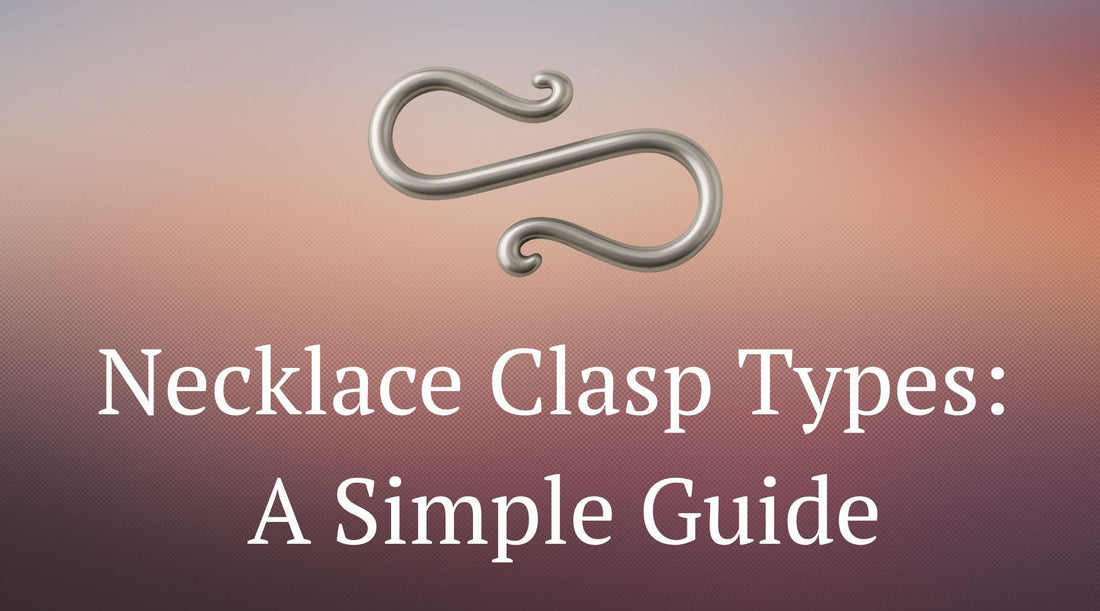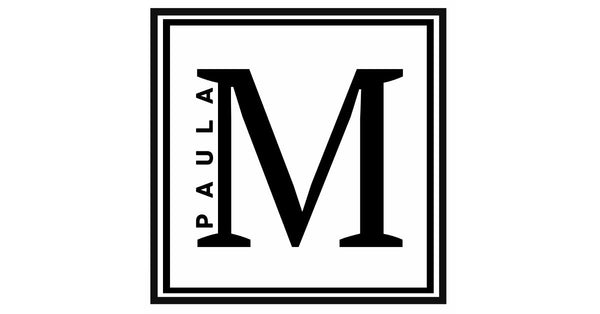
Necklace Clasp Types: A Simple Guide
Share
The clasp of a necklace can be one of the most important features of a necklace chain. Not only does the clasp provide functionality, but it can also serve as a distinctive design element.
Choosing the right clasp ensures the security of your jewelry, but it can also be the reason you avoid wearing a necklace if it proves frustrating to open or close.
In this article, we will explore the different necklace clasp types, the style of necklaces they are best suited for, and how easy they are to handle.
Types of Necklace Closures

Lobster Clasp
-
How It Works: Spring-loaded mechanism that opens and closes with a small lever.
-
Best For: Medium to heavy beaded necklaces.
-
Ease of Use: Moderate - Difficult. Requires some dexterity as they can be quite small, but are very secure.

Spring Ring Clasp
-
How It Works: Small circular clasp with an internal spring that opens with a tiny lever.
-
Best For: Lightweight, delicate necklaces.
-
Ease of Use: Difficult. Much like the lobster clasp, a Spring ring can be very small and can be challenging to use for those with arthritis in their hands.

Toggle Clasp
-
How It Works: T-shaped bar slides through a decorative loop to secure.
-
Best For: Chunky statement necklaces, boho and artisan designs.
-
Ease of Use: Easy. This is one of my favorite clasps because of its ease of use. It's best for larger statement necklaces rather than fine chains, but it's a secure and easy way to fasten your necklace.

Magnetic Clasp
-
How It Works: Two magnets connect to keep the necklace in place.
-
Best For: Lightweight to medium-weight necklaces. Be careful to test the magnets to make sure they are strong enough to maintain closure otherwise they may pull apart.
-
Ease of Use: Very easy to use. The magnets connect together with little effort; ideal for people with arthritis

S-Hook Clasp
-
How It Works: S-shaped hook latches onto a loop.
-
Best For: Handmade, rustic, or artisan-style necklaces.
-
Ease of Use: Moderate; simple to hook but can slip if not secured tightly.

Barrel Clasp
-
How It Works: Two ends screw together to form a barre closure.
-
Best For: Small to medium beaded necklaces.
-
Ease of Use: Moderate; requires both hands to twist open and close.

Box Clasp
-
How It Works: A small tab slides into a decorative box and locks in place.
-
Best For: Vintage-inspired, pearl, and delicate beaded necklaces.
-
Ease of Use: Moderate; stylish but requires careful alignment when clasping.

Hook and Eye Clasp
-
How It Works: A hook latches onto a circular loop.
-
Best For: Handmade and bohemian-style beaded necklaces.
-
Ease of Use: Easy; quick to fasten but can come undone if not hooked properly.

Slide Lock Clasp
-
How It Works: One side slides into the other and locks in place.
-
Best For: Multi-strand beaded necklaces.
-
Ease of Use: Moderate; requires precise alignment but is very secure.

Fish Hook Clasp
-
How It Works: A small hook inserts into an oval-shaped slot and locks in place.
-
Best For: Vintage and pearl necklaces.
-
Ease of Use: Moderate; secure but may need both hands to operate.
How to Choose the Right Clasp
- When choosing a necklace—whether for yourself or as a gift—the clasp might seem like a small detail, but it plays a big role in how the necklace feels, functions, and looks. Here's what to consider when deciding which clasp is best:
- If you're having a custom necklace made, you have the freedom to choose the clasp style that suits your needs and preferences.
- If you’re selecting from existing designs, take a close look at the clasp. Is it easy to open and close? This is especially important for anyone with limited dexterity.
- Can the clasp be easily fastened at the back of the neck, or would it be easier to bring it around to the front to secure it?
- Is the clasp proportionate to the rest of the necklace? Does it suit the overall aesthetic?
- If the necklace doesn’t have a pendant, a heavy clasp may swing around and shift to the front as you move—something I personally find quite frustrating!
- Does the clasp feel secure? A delicate or flimsy clasp can result in a lost necklace, which is the last thing you want after investing in a beautiful piece. If you're ever unsure, consider adding a safety chain. (We’ll cover that more in a future blog post.)
- While the clasp may be a small component of a necklace, it can make a big difference in both comfort and style. From secure lobster clasps to easy magnetic closures or vintage-style box clasps, the right fastening ensures your necklace stays in place and feels good to wear.
So, next time you're shopping for a necklace or designing a custom piece, give some thought to the clasp. There are many necklace clasp types, and choosing the right one means finding the balance between style, security, and ease of use. You might just discover your new favorite way to fasten your jewelry!
Looking to Learn More About Custom Order Necklaces?
If you're interested in having a custom necklace made, I'd love to help bring your vision to life. Simply fill out the custom order request form, and I’ll be happy to discuss your ideas, preferences, and options with you.
Other articles that may interest you on the topic of necklaces
Seed Beaded Necklace Chains: Exploring Beadwork Techniques for Jewelry Chains
Choosing the Best Necklace Length: What You Need to Know
